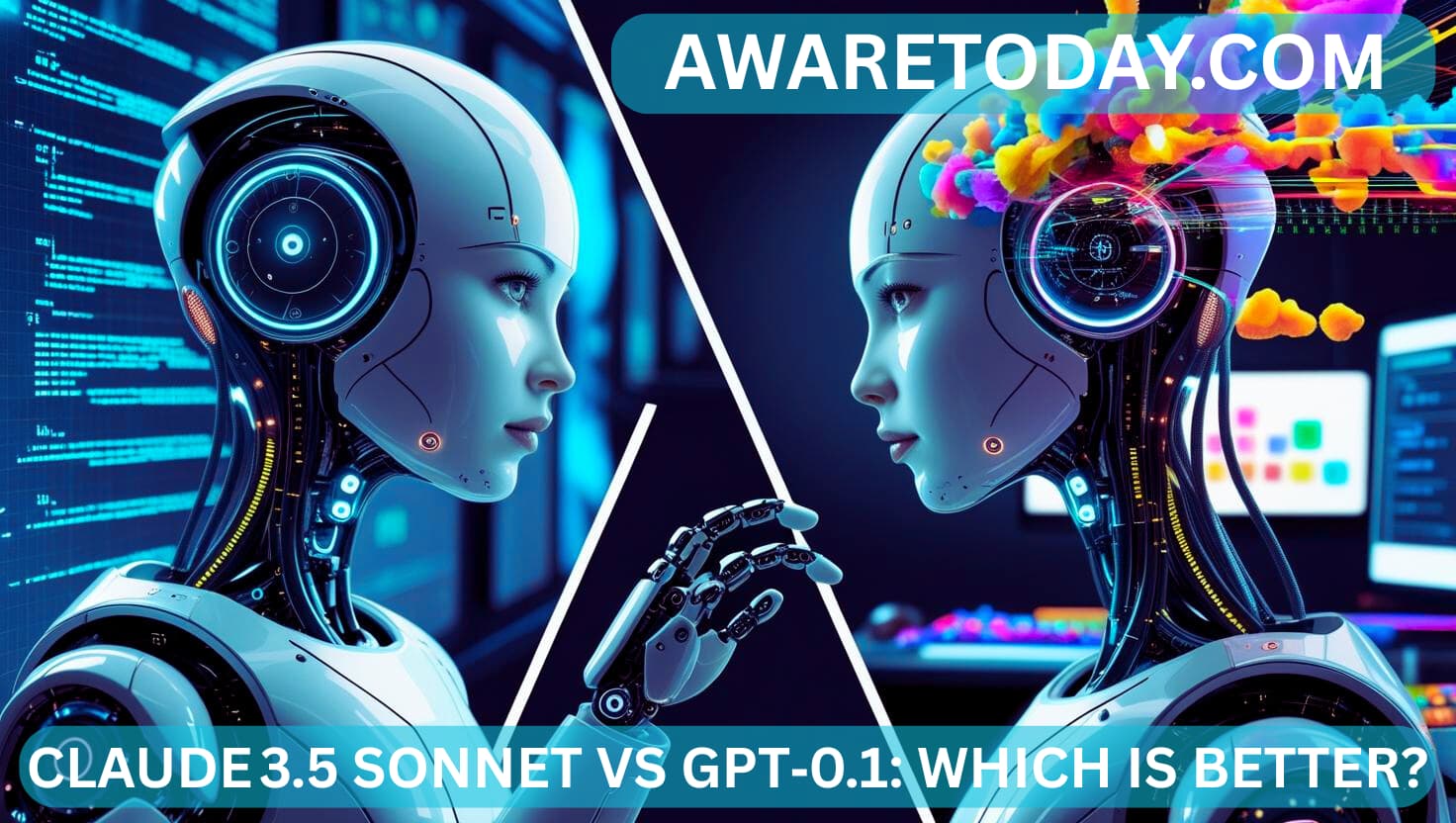Artificial Intelligence (AI) is rapidly changing how we work, communicate, and solve problems. It plays a role in everyday tools like smart email suggestions and research assistance.
Two major AI models leading this shift are Claude 3.5 Sonnet by Anthropic and GPT by OpenAI. Both are powerful, but they are built with different design goals. They handle tasks like text generation, coding, document analysis, and multimodal input in unique ways.
People like developers, teachers, writers, and business teams are using AI more in their daily work. It helps them save time and get things done faster. That’s why it’s important to understand how different AI tools work.
People using AI need to know the key differences between models to choose the right one. This will be important as choosing the model helps to simplify the tasks.
A Close Comparison of Claude 3.5 Sonnet and GPT‑0.1
Claude 3.5 Sonnet was built to emphasize thoughtful reasoning, deep understanding of subjects, and safe, effective outputs. Claude 3.5 Sonnet is part of Anthropic’s Claude 3.5 series of models. It sits between the lightweight Claude Haiku and the more capable Claude Opus. This gives it a nice balance between good performance and low cost. Claude 3.5 Sonnet offers better understanding and faster responses. It’s a great choice for users who want a capable AI assistant without spending too much. We recommend Claude 3.5 Sonnet if you want an AI assistant with decent capability without spending too much.
On the other hand, GPT‑0.1, is a simplified version of OpenAI’s GPT-4 architecture. It is designed to give users more value by keeping the useful parts of GPT-4. To do this, it reduces some computing needs and speed.
In this AwareToday review, we compare Claude 3.5 Sonnet and GPT-0.1 in detail. The comparison covers nine key areas. These include coding ability, memory, and overall performance.
1. Coding and Technical Skills
Claude 3.5 Sonnet is very strong when it comes to generating and editing code. It is capable of reviewing high-level logical structures and performing multi-step correct activities. Its built-in “Artifacts” feature allows developers to preview and refine code live. This ultimately makes it much easier to run tests and address problems without context switching between programs. Claude’s standard coding problem solving rate is 64% whereas Claude Opus stands at 38%. It demonstrates that it has greatly improved technical proficiencies..
Verdict:
Claude 3.5 Sonnet is more adept with rich development workflows and complex programming needs. GPT‑0.1 is better for automating simple tasks, fast development, or a user focused on speed and ease.
2. Context Window & Memory
Claude 3.5 Sonnet boasts a staggering 200,000-token context window. It can remember things from long code files, documents, or past work. This is helpful for research or working on old systems. It can be used for academic research, long-form content, or legacy system analysis.
GPT‑0.1 is a smaller version of GPT-4. It has a smaller context window, usually around 50,000 tokens. This is enough for most general tasks like writing, summarizing, and chatting. However, it still will miss context in incredibly long inputs or complex back-and-forth longer tasks.
The verdict:
If simply deemed memory, reasonable stateful logic, or threading documents, Claude 3.5 Sonnet is superior. If the project doesn’t need to handle long content or complex tasks, GPT‑0.1 works effectively well for less complex tasks.
3. Reasoning and Instruction Following
Claude 3.5 Sonnet excels at reasoning, following steps, and more complex logic tasks. It can handle graduate-level reasoning and abstract thinking tasks very well. This includes things like humor, metaphors, and imagining possible situations.
GPT-0.1 does very well with structured guidance and simple chaining tasks. It follows instructions well and answers quickly. However, it may lack depth in more detailed or subtle conversations.
Verdict:
Are you looking for a more reflective, exact logical response with high accuracy? Claude 3.5 Sonnet stands tall in the competition. GPT-0.1 is still useful in simple workflows to resolve tasks quickly.
4. Multimodal Abilities
Claude 3.5 Sonnet provides the ability to take in vision-based information, like interpreting (or analyzing) graphs, images, or charts. Also, Claude 3.5 Sonnet can take on visual reasoning tasks. Claude 3.5 Sonnet also has “agentic behavior,” which means it can act like a user.
GPT‑0.1 can only process text. In other words, GPT‑0.1 can’t directly understand images or visual information. This limits its use in areas such as digital design, visual QA or analytics, and data visualization, unless amplified with 3rd party tools.
Verdict:
Claude 3.5 Sonnet is the clear winner for visual workflows, GUI analysis, or multimodal data interpretation. GPT‑0.1 wins for text-only tasks.
5. Speed and Cost
Claude 3.5 Sonnet offers great value with strong performance at a lower cost. It delivers fast results while staying affordable for most users. Averages roughly 3 cents per million input tokens. 15 cents per million output. Cheap compared to Opus, while still powerful enough to do a lot of complex work. It’s about 2x faster than Opus, and thus we have speed at scale.
Pricing for GPT‑0.1 is more affordable than full GPT-4 or GPT-4o. The price for GPT-0.1 will depend on how it is set up and who is serving the thing. Because it is a smaller model, it has less resources. This makes it one of the cheapest options for simpler or bulk tasks.
Verdict:
Use GPT‑0.1 if you are operating on a tight budget and an easy-use is required. Claude 3.5 Sonnet provides more capability per dollar needed for more medium – complex needs.
6. Safety and Alignment
Claude 3.5 Sonnet is built on Constitutional AI – developed and tested by Anthropic as safety-first approach. The method includes ethical and safe behavior using built-in guidelines.
GPT‑0.1, along with all OpenAI models, have strict safety filters and moderation for content. We might need extra security in sensitive environments to reduce possible problems.
Verdict:
Claude 3.5 Sonnet provides better guidelines for mission critical tasks and tasks subject to ethical restriction. If you are a user evaluating standard consumer use or standard business/enterprise options please use GPT‑0.1!
7. Accessibility & Integration
Claude 3.5 Sonnet can be accessed through multiple avenues. These include Anthropic’s API, Amazon Bedrock, Google Vertex AI, and Claude.ai’s Pro and Team plans. This provides it high availability to organizations and businesses.
GPT‑0.1 is easier to use in lightweight apps, mobile tools, or edge devices. This is because it’s a smaller model, making it simpler to deploy and integrate.
Verdict:
With large-scale cloud-native ecosystems, Claude 3.5 Sonnet will easily fit into that infrastructure. GPT‑0.1 is best for on-device AI systems, or on smaller scale automations.
8. Real-World Use Cases
Academic Use: Claude 3.5 Sonnet is very good at reading and identifying important parts of full research papers. It helps understand many meanings in context and gather complex information. GPT‑0.1 is faster when summarizing lecture notes, or creating study notes.
Software Development: Claude can help walk through large codebases, and correct a stubborn bug. GPT-0.1 is very effective when writing basic scripts or running quick ideas.
Customer Support: Claude can guide a user through the steps to fix a technical issue with relevant interpretation of screenshots. GPT‑0.1 can support standard questions and can be used to power their simplest support bots.
Content Creation: Claude creates great depth of articles, stories, or creative writing. GPT‑0.1 is a better fit for short-form content like taglines, social media posts, premium advertising, and quick marketing copy.
Automation & Execution: Claude supports advanced automation and integrates with enterprise systems well. GPT‑0.1 works well for simple tasks like reminders, voice assistants, and calendars. Its context handling is enough for quick replies and everyday uses.
9. Future Potential & Roadmap
Anthropic is adding to their Claude 3.5 family. Claude Sonnet’s a model with Edits and Handles, like Haiku (the fastest) and Opus (the most powerful). New features and enhancements give it better functionality. These updates are starting to make AI feel more like a real-time digital assistant.
OpenAI continues to optimize lightweight models. Performance improvements, greater compatibility, and collaborative work with apps like Microsoft Copilot, ChatGPT, or APIs can make GPT‑0.1 more powerful and flexible over time.
Final Thoughts
Claude 3.5 Sonnet and GPT-0.1 reflect two different visions of AI.
If you need strong reasoning, visual skills, and tool support, Claude 3.5 Sonnet is a great choice. It also offers high safety standards, making it ideal for serious work.
If you need speed and low-cost performance, paired with easy deployment for everyday text-first tasks, consider GPT-0.1.
At AwareToday, we don’t think about AI as choosing the most powerful tool; we think of choosing the right tool. The initial step to successfully using AI is understanding the capabilities of your model. This helps you get better results and avoid mistakes. Whether you’re solving problems, working on creative projects, or building new apps, this matters.









